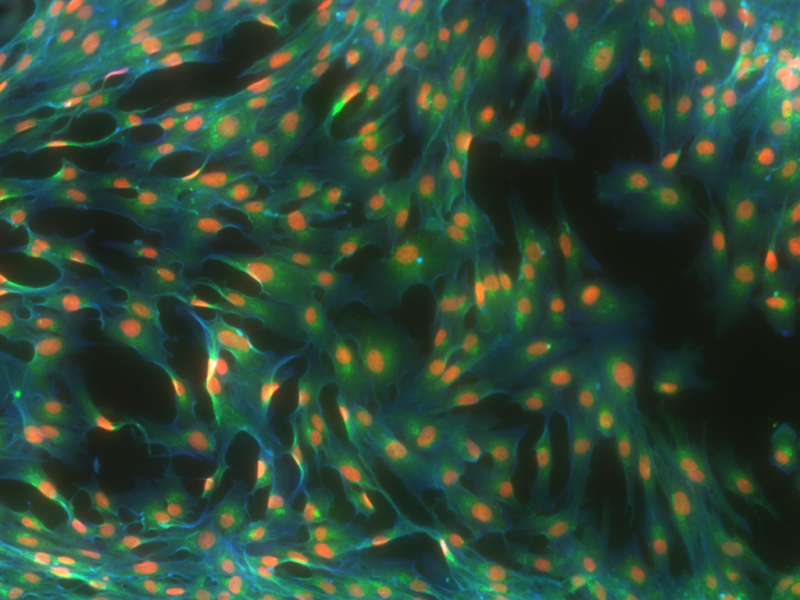To investigate the migration behavior of cells, we have developed a method that tracks single cells in phase-contrast microscopy. In contrast to staining-based approaches, the cellular dynamics remain unaffected. The extracted trajectories can be analyzed further with respect to experimental conditions, for example signal proteins or mutations.
Analysis of cell trajectories with Markov State Models
One scenario is the application of growth factors next to a cell population. Assuming that cell migration is a stochastic process, we can derive a Markov state model. This enables us to compute meta-stabilities and committor probabilities. Growth factors are known to attract cells, and we can quantify this effect with our methods.
Collective migration in scratch assays
In a second scenario, we use the trajectories to investigate collective migration. Therefore, we quantify neighborhood relations between cells and can then show how mutations or knock-outs affect the group behaviour (collectivity). Furthermore, we were able to show that the migration behaviour of cells can differ in speed an collectivity depending on the nanostructure of the surface.
